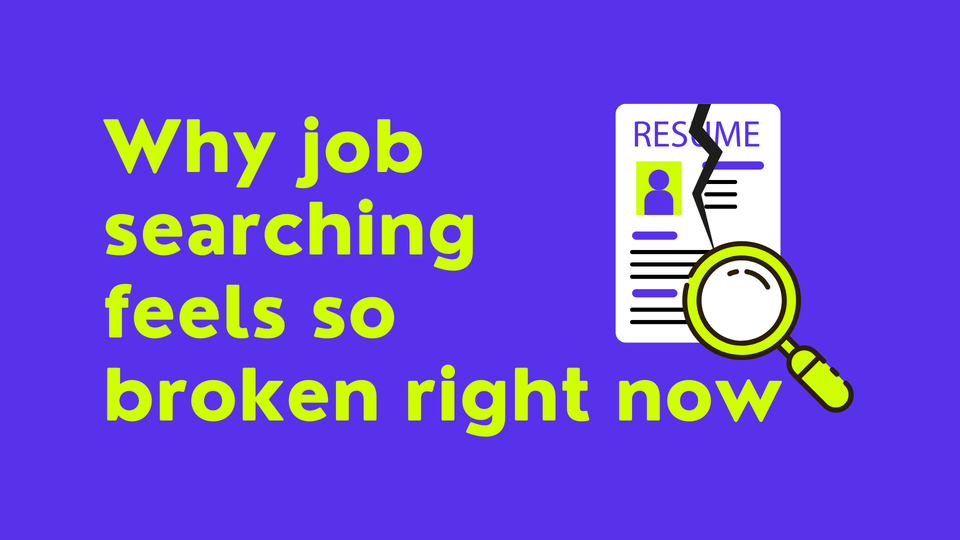Why job searching feels so broken right now

“It’s become so hard to find a job right now.”
That’s something I hear almost daily. And as someone who’s been on both sides of the hiring process—applying and reviewing applications—I get it.
Even for experienced marketers, job searching in 2025 feels like a full-time job… with terrible conversion rates.
Most roles posted on LinkedIn get 100+ applications within hours. ATS filters are now just the first boss—beyond that, applications are being scanned and summarized by AI. And even if your resume is “optimized,” it still may never be seen by a human.
But here’s what’s making it especially hard for marketers:
Marketing is one of the most competitive fields to job search in—because creativity, storytelling, and outreach are expected. And most marketers are already doing the “above and beyond” stuff.
Sending a cold DM? You’re not alone. Building a Notion playbook or personal landing page? That’s table stakes. Hiring managers know that marketers know how to market. And their expectations are higher because of it.
I recently saw a post from a VP of Revenue Marketing that stopped me in my scroll. She said:
“1,300+ job applications in 5 days. Every DM follows the same template: ‘I'm perfect for this role because...’
But here's what would actually get my attention:
→ I’m using AI to identify underperforming ad creative before it goes live.
→ I built an AI tool that tracks brand mentions.
→ I automated forecasting using XYZ.
If you're reaching out anyway, why not stand out?”
That’s the market we’re in. AI is reshaping every part of marketing—and hiring managers are looking for evidence that you’re adapting.
So what do you do when creativity is the baseline?
You build a system that addresses every layer of the job search—and lets your originality shine in the right places.
Here’s how I’ve been staying afloat and consistently securing interviews (even when it’s noisy out there):
- Your resume has to work for both bots and busy people.
I use modular, ATS-friendly layouts but rewrite each one based on the company’s specific priorities. I look at job descriptions, their marketing vision, website, recent content—then tailor accordingly. - Your outreach has to say more than “I’m a perfect fit.”
I reference something specific. A campaign they launched. A LinkedIn post they wrote. A problem they mentioned. And craft a message that only highlights what matters to them and in a format that catches the attention immediately (like a video intro). I make it impossible for the message to feel mass-sent. - I use AI, but I don’t outsource my personality.
I work with ChatGPT to write faster, think deeper, and prep smarter—but every piece still sounds like me. My voice, my positioning, my experience. - I built a CRM just for my job search.
Roles I applied for, contacts I messaged, what version of my resume I sent, which prompts I used to prep—it’s all there. It keeps me consistent, sharp, and proactive. - I treat the job search like a campaign.
Creative, targeted, data-backed, and designed to convert.
This is what helped me get traction. And because it’s a lot to manage, I turned it into something more structured:
🧠 The Marketing Job Search OS — a playbook I built for myself, now available for other marketers.
It’s not a course. It’s not a silver bullet. It’s just the system I wish I had when I started. And it's the system that I think job searchers need right now to be seen.
The job market is hard right now. But with the right process—and a dose of creativity—you can still stand out.
